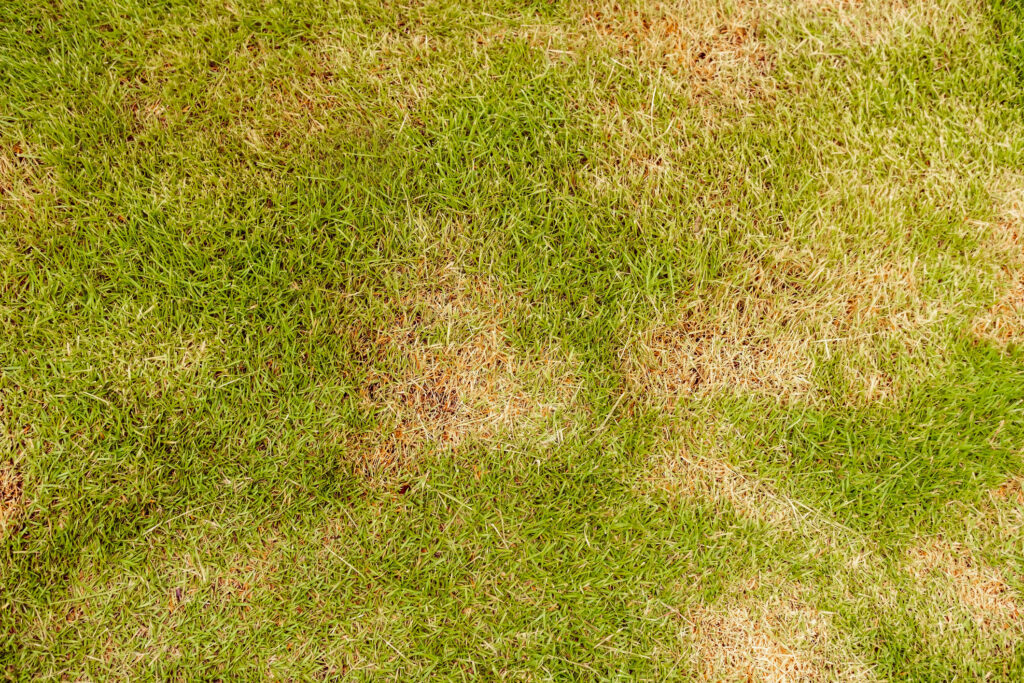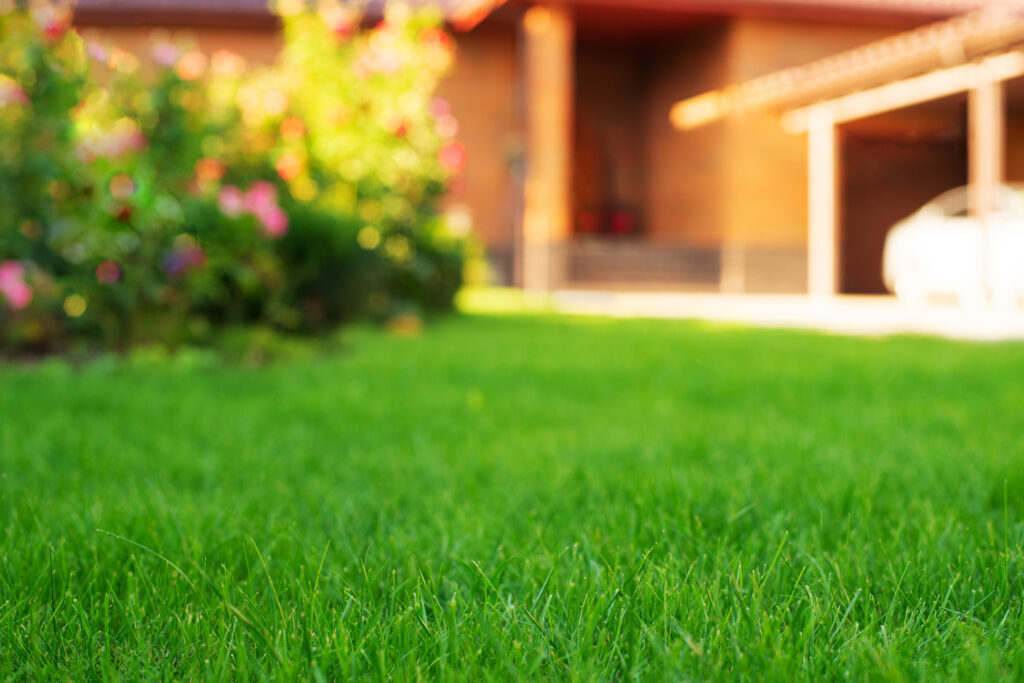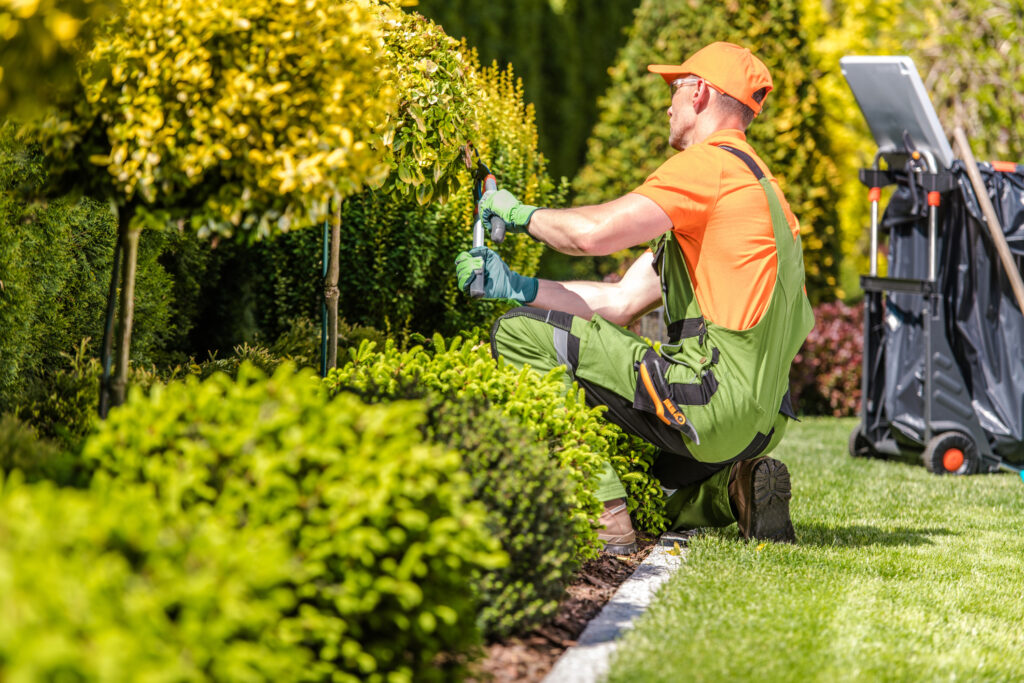Another hot, sunny day without rain, and you forgot to turn on the sprinkler again (sigh). Now, a once lush green lawn looks yellowish brown and makes a horrific crunch sound when you step on it. It’s more like hay than grass. It’s so dry that even the family dog doesn’t want to walk on it. All that time, money, and effort during the spring to fertilize and care for it, but after a few weeks without much rain, it looks like a scorched wasteland. So now what? Should you make a feeble attempt to water the “dead grass”?
The Basics of Lawn Health
Understanding the fundamentals of lawn health is essential for maintaining a lush, vibrant yard. Healthy grass showcases a deep green color, demonstrating its vitality and the effectiveness of its nutrient uptake. Such grass stands up well to various stresses, including weather changes, foot traffic, and potential pest invasions. A well-maintained lawn not only enhances curb appeal but also plays a critical role in the local ecosystem by producing oxygen, offering cooling effects during hot weather, and preventing soil erosion.
The importance of lawn health extends beyond aesthetics. A robust lawn prevents the proliferation of weeds, resists diseases, and minimizes pest problems, reducing the need for chemical interventions. Moreover, a healthy lawn contributes to the overall well-being of your outdoor environment, creating a space that’s enjoyable and safe for family activities. By prioritizing lawn health, homeowners can ensure their lawns remain durable and vibrant throughout the changing seasons, embodying the care and attention invested in their upkeep.
What Causes Grass to Turn Brown?
Lawns can turn brown due to a combination of seasonal changes and various factors that affect their health. Brown grass doesn’t always indicate that your lawn is dead; in many cases, it may simply be dormant. Several elements can contribute to the browning of your lawn, including a lack of water, diseases, bugs, pests, soil acidity, improper mowing practices, and adverse weather conditions.
Lack of Water
One of the most common reasons for brown lawns is an inadequate water supply. Lawns require a consistent amount of moisture to thrive. During dry seasons or periods of drought, the grass can go dormant, turning brown as a survival mechanism to conserve water.
Disease
Why is my grass dying even though I water it? Lawn diseases can rapidly spread and lead to brown patches or overall discoloration. Proper lawn care practices, including aerating and avoiding overwatering, can help prevent disease outbreaks.
Bugs and Pests
Insects like grubs, chinch bugs, or armyworms can cause damage to the roots and blades of grass. This damage can result in browning and may require pest control measures to rectify it.
Acidity
Grass turning brown despite watering? Soil with an imbalanced pH level, either too acidic or too alkaline, can hinder nutrient absorption by the grass. This can result in the grass turning brown due to nutrient deficiencies.
Improper Mowing
Incorrect mowing practices, such as cutting the grass too short or using a dull mower blade, can stress the grass and cause it to turn brown. It’s essential to mow at the right height and with sharp blades to maintain a healthy lawn.
Weather
Extreme weather conditions, such as prolonged periods of intense heat or cold, can also cause the grass to go dormant and turn brown temporarily. Grass can often recover when the weather becomes more favorable.

What Does a Brown Lawn Mean? Is it Dead Grass?
According to an article from the online publication Horticulture ( hortmag.com), a brown lawn is not necessarily a dead lawn. A large volume of summer sun without water tends to stress out a lawn. When grass goes without an adequate amount of water, it triggers a response to enter a dormant cycle. It dries out and turns brown as part of the cycle.
Dormant vs. Dead Lawns
Knowing the difference between dead grass and dormant grass is essential for effective lawn care. In a dormant lawn, the roots remain alive, retaining their health and vitality beneath the surface. While the grass may appear brown and lifeless, its root system remains intact, allowing for potential recovery when favorable conditions return. Soil moisture, although reduced, is not completely depleted in a dormant lawn. Grass resilience is another crucial indicator; in a dormant lawn, the grass is more likely to bounce back when provided with proper care, such as watering and fertilization. In contrast, a dead lawn will display signs of root decay, soil that is excessively dry or compacted, and grass that lacks the ability to recover. Understanding these distinctions is essential for implementing the right remedies and restoring your lawn to health.
The Benefits of Lawn Dormancy
Lawn dormancy actually offers several significant benefits. These advantages primarily relate to resource conservation and the overall health and resilience of the lawn.
1. Water Conservation: One of the most prominent benefits of lawn dormancy is the conservation of water. Dormant grasses require significantly less water to survive. During periods of dormancy, lawns can withstand prolonged periods of drought without becoming stressed or dying. This reduced water demand is particularly valuable in regions with limited water resources or during dry seasons when water conservation is essential.
2. Energy Savings: Dormant lawns expend less energy. This is beneficial as it allows the grass to allocate its resources more efficiently. The energy saved during dormancy can be redirected to essential functions such as root maintenance and defense mechanisms. This increased energy efficiency can help lawns recover more rapidly and thrive when conditions become favorable again.
3. Reduced Maintenance: Lawns in dormancy require less maintenance. Mowing, fertilizing, and other care tasks can be minimized during this period. Homeowners can save time and resources by avoiding unnecessary lawn maintenance when the grass is naturally resting.
4. Resistance to Environmental Stress: Dormant lawns are better equipped to withstand various environmental stressors, such as extreme temperatures, drought, or foot traffic. The reduced growth rate and metabolic activity make grasses more resilient and better prepared to endure adverse conditions without suffering damage.
5. Pest and Disease Control: Many pests and diseases that affect lawns are less active or dormant during the same periods when the grasses go dormant. This can help reduce the risk of infestations and diseases, providing a natural form of pest and disease control for lawns.
6. Long-Term Lawn Health: Lawn dormancy contributes to the overall health and longevity of the grass. By allowing the grass to rest and recover during challenging conditions, it can come back stronger and healthier when conditions improve. This helps maintain a lush and green lawn in the long term.
7. Environmental Sustainability: The conservation of resources, particularly water, is not only cost-effective but also environmentally responsible. Using less water for lawn maintenance reduces the environmental impact and promotes sustainability.
Some grass types have evolved to naturally adapt to dormancy in response to specific environmental cues. For instance, cool-season grasses like Kentucky bluegrass and fescue varieties have developed the ability to go dormant during the hot summer months when temperatures and moisture levels become unfavorable for growth. In contrast, warm-season grasses, such as Bermuda grass and Zoysia grass, naturally go dormant during winter, a period of colder temperatures and reduced sunlight. These adaptations highlight the incredible flexibility of different grass species in responding to their local climate.

How to Fix Brown Grass and Restore Your Lawn
Be sure not to wait too long to water your lawn during dormancy. Long periods of drought will eventually kill the grassroots. As soon as you begin to water the lawn, you’ll notice the green color begins to return (some spots appear sooner than others). Wondering how to fix brown grass in the summer? For lawns to be effectively watered during the summer, it’s best to set up a watering schedule. Depending on your geographical location and the type of grass, a lawn typically needs around ½ to an inch of water per week to keep it from drying out.
So how long should you run the sprinkler to get that ½ inch? Every sprinkler is different. So, you will need to measure how much water your sprinkler produces. According to an article on SFGate, an affiliate of the San Francisco Chronicle, you can easily measure the sprinkler’s spread of water by placing multiple containers, such as a bucket or cans, around the lawn. Set a timer and turn on the sprinkler. When the containers reach ¼ of an inch, check the time. If the time is 10 minutes, then the sprinkler would need to run for 20 minutes to spread ½ inch of water on the lawn and 40 minutes to spread 1 inch. Depending on the type of soil and its dryness, an inch of water should penetrate deep enough into the soil to reach the roots. If you’re unsure of your lawn and soil specifics, you can always ask your lawn service provider for maintenance tips and suggestions.
Remember, the most important thing you can do to keep a lawn green is to water it. When planning your water schedule, make sure it’s a time that’s convenient and easy to remember. If you can’t find the time or can’t remember to turn the sprinkler on, you may want to consider purchasing an inexpensive irrigation timer. Some of them even have smart technology, which means you can turn the sprinkler on or off with an app from a smartphone when you’re not at home. Whether you’re turning on the water manually or with a timer, just make sure your lawn gets the water it needs to grow and thrive.
Key takeaways: To sum up the above, effectively address brown grass and rejuvenate your lawn by considering these key strategies:
- Start watering as soon as signs of dormancy appear to prevent root damage.
- Implement a regular watering schedule during the summer, aiming for ½ to 1 inch of water weekly.
- Measure your sprinkler’s output by using containers to catch water, adjusting the run time accordingly for adequate soil penetration.
- Consult a lawn care provider for specific advice tailored to your lawn’s soil type and condition.
- Use irrigation timers or smart technology to maintain consistent watering, ensuring your lawn’s health and vitality.
Preventive Measures for Lawn Health
Preventive measures are essential to maintaining the health and beauty of your lawn throughout the year. By adopting a proactive approach to lawn care, you can prevent many common issues that lead to deterioration and damage.
Regular Maintenance:
Committing to a routine care schedule is vital for preventing common lawn issues before they arise. This includes regular mowing to the recommended height, consistent watering, and timely fertilization to ensure your grass receives the nutrients it needs to thrive. Regular maintenance also involves periodic aeration to facilitate oxygen, water, and nutrient penetration into the grass roots.
Seasonal Lawn Care Tips:
Each season brings specific challenges and opportunities for lawn care. In spring, focus on overseeding to fill in bare spots and applying pre-emergent weed control. Summer demands diligent watering and mowing practices to keep the lawn resilient against heat stress. Fall is ideal for aeration and overseeding to prepare the lawn for winter dormancy. Winter care mainly involves keeping the lawn clear of debris and minimizing foot traffic on frosty grass.
Professional Lawn Care Support:
While many aspects of lawn care can be managed independently, certain situations require the expertise of professionals. If you encounter persistent issues such as uncontrolled pest infestations, diseases, or complex landscaping needs, seeking professional lawn care support can provide specialized treatments and advice tailored to your lawn’s specific conditions. Experts can also offer insights on long-term care strategies to enhance the health and appearance of your lawn.

Looking for Solutions for your Lawn Care or Landscaping Business? RealGreen Can Help
For lawn companies that fertilize or manage client lawns each month, RealGreen has a product to help customers with lawn maintenance tips and more. Our Customer Assistant Website is a 24/7 online portal for your lawn customers to have convenient access to features such as seasonal information, account profiles, payments, additional services, and much, much more. Companies can even add more features to get referrals from satisfied lawn customers and send automated marketing as well as email notifications to remind customers to water their lawns after a service.
Elevate your lawn care business with an industry-leading green solution. RealGreen’s lawn care software provides a comprehensive solution for efficiently managing every facet of your lawn care business. Allow our software to take care of the daily responsibilities in business operations, marketing, billing, and more, enabling you to focus on your strengths: expanding and nurturing your business. Our lawn care business software streamlines your operations, saving you time and money and propelling your success. Request a FREE DEMO today!
FAQs
1. Why is my grass turning brown?
Grass can turn brown due to various reasons, including drought, heat stress, disease, or a lack of nutrients.
2. Will watering dead grass bring it back?
Watering can revive dormant or stressed grass, but not dead grass. Dead grass needs to be reseeded or replaced.
3. If my lawn turns brown, does that mean it is dead?
Brown grass doesn’t necessarily mean it’s dead grass; it’s often dormant or stressed. Proper care can often revive it.
4. How long should I water my grass with sprinklers?
Water your grass with sprinklers for about 1 inch of water per week, typically in one or two deep watering sessions.
5. How often should I be watering brown grass?
Water brown grass deeply but infrequently, typically 1-2 times a week, depending on local conditions.
6. Should I fertilize brown grass?
Fertilizing brown grass can help, but it’s essential to follow recommended guidelines and not over-fertilize.
7. How long does it take for brown grass to turn green again?
The time for brown grass to turn green again depends on factors like grass type, care, and weather. It can take weeks or months.
8. Is yellow grass dead?
Not necessarily. Yellow grass can be a sign of several things, including drought, nutrient deficiency, or disease. If the grass is still alive, it may be possible to revive it with proper care.

Shayla started at WorkWave in the marketing department in August 2022. As Senior Product Marketing Manager for RealGreen by WorkWave, Shayla spends her days researching the lawn and landscape industry, strategizing go-to-market efforts, and building relationships with customers to better serve and communicate.
